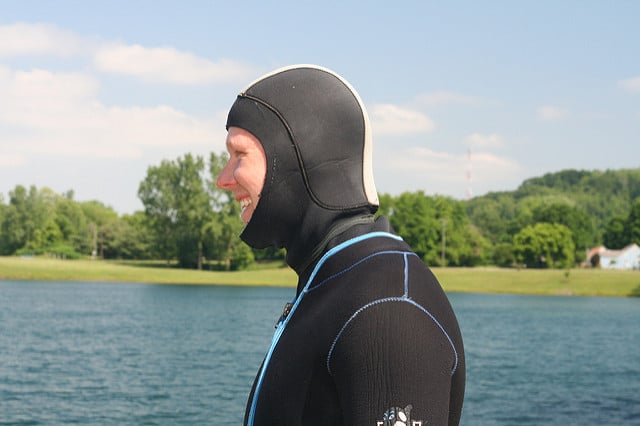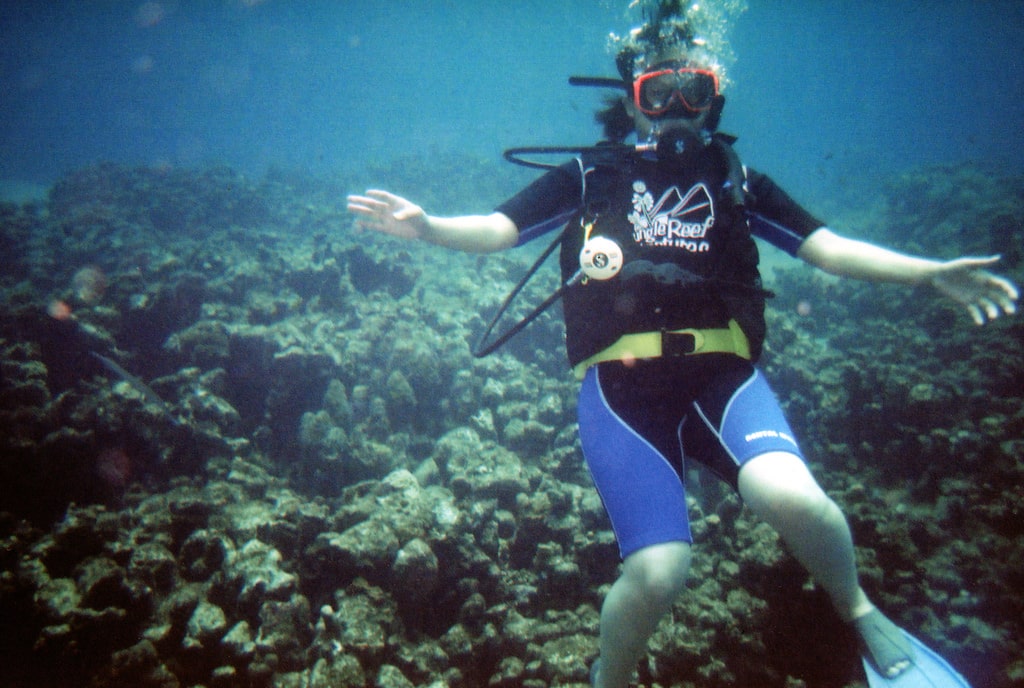Bottom times, many novice divers feel embarrassed for being the first one to have to surface. Sometimes they are made to feel bad by a more experienced dive buddy who had to cut their own dive short, or worst being in a guided group dive where the dive is called when the first diver reaches a certain tank pressure level. Most divers will just shrug it often and tell the novice not too worry about it, that longer bottom times will come with experience. While experience will help you improve your dive times, there are other steps that will go a long way to improve your bottom times.
Be Fit
I have brought up this point a number of times in another article that included dive fitness but a short repeat now is relevant. Scuba Diving is a sport that is not considered being physically intense, however, in reality it is. Conditions are never exactly alike on any two dives and no two divers are exactly alike so estimates of exercise intensity is hard to judge. While these estimates vary greatly, a calculation of burning 500 calories a hour are fairly common. This is about the same as taking a very brisk walk for the same period of time. Diving in cold water or currents can raise that amount to 900 calories an hour, about the same as a intense run.
The better conditioned we are, the easier the exercise is. A easy work out means we breathe less. We have all seen the exercise reality programs where at the start of the series the contestants can barely walk up the front steps without having to stop to get their breaths. Weeks later, they are running up mountains without breathing hard. While it may be an extreme example, it does illustrate that when we are out of shape we need much more air. While walking up those steps or running the mountain the amount of air we use is not really an issue, however, when diving our air supply is limited. The faster we use it, the less time we can stay down. The beginning of improving from sedentary to active has the most improvements for our bottom times.
Another time we may find ourselves breathing hard is at the start of a dive. The excitement of getting into the water might raise our heart rate and breathing rate. I had always felt that I used so much more air in the first part of my dives. When I started using a new dive computer with integrated air reading the charts of my surface air consumption proved it. Surface air consumption is a reading of how much air you use in a minute adjusted for pressure. This will illustrate for us how we use our air. I found that the first 5 minutes of a dive I was breathing 2 or 3 times more air than any other part of the dive. I now make sure that I try to slow my breathing while waiting for the other divers before descending.

Be Warm
Having the proper thermal protection when we dive is important. Our bodies are normally around 98.6°F (37°C) and water temperatures below that will cause our bodies to cool. Being cold on a dive can be uncomfortable and if our body temperature drops too far can create an medical emergency. Even if we do not reach the point where we start to shiver, our body is always trying to maintain the proper body temperature. Part of the temperature replacement will happen when we use our muscles. However, if that is not enough, the body will start to burn stored energy to create the heat needed. Body heat management is one of the largest portions of a person’s Basal Metabolic Rate, the calories the body burns at rest. Aerobic metabolism is the process that is used, and that needs oxygen.
If you feel chilled near the end of a dive but not necessarily cold, your body may have been working overtime keeping you warm. As the top of the head is one of the areas that the most heat loss occurs, just adding a hood might provide that little extra warmth that is needed. It might also be enough to give you a little extra air.

Streamline
Being streamlined is an important concept for scuba divers, not only for protecting the environment and improving buoyancy control but also for our bottom time. Aircraft and race cars are designed with aerodynamics that allow them the least resistance to the air as possible. The same concepts apply to the human body as it moves through the water that provides thousands of times the resistance of air. When we streamline we are considering the equipment we hang off our BCD and parts of our diving kit. We want to keep it close to our bodies and to eliminate items being pulled by currents or being able to be snagged while diving.
Streamlining also applies to how we move our body in the water. If our body is in the same horizontal plane as the surface we are exposing less surface area of our body to the direction of travel. This will allow less resistance compare to exposing our chest or other portions of the body. The lower resistance mean we do not have to work as hard to over come the waters resistance. Our hands and arms can also induce drag. If your hands are not holding something they should be close to your body. Placing the hands and arms across your chest is a common manner to reduce drag. Having them along your sides or hands behind your back are also frequently seen. You may often see divers using their hands while swimming. This is an ineffective means of motion. Your legs are much more powerful.
Learn a few different styles of kicks. The way you use your legs and fins will also have an impact on your streamline and the efficiency that you use your energy. The more efficient you are, the longer you can dive.
Watch Your Depth
Face it, if you want to dive for an hour, spending your NDL at 40 meters will make you come up short. We learned Boyle’s law in our Open Water Diver training. If we take in the same volume of air at 10 meters (33 feet) as we do at the surface, you will find that we are using more air. The air is compressed so there is more air in the same volume. Using a surface air calculation, That amount would double at 10 meters and triple at 20 meters. Even staying a little shallower than other divers can give you a few extra minutes.
Watch the Currents
Currents are a variable that has to be judged each and every time. A drift dive uses much less energy, therefore less air, than a normal dive. Swimming into a current uses more energy. If you are swimming into a current you may find that the current is weaker at different depths. Judging the current can improve your bottom times.
BONUS: Bottom Times Improve As You Get Better
An extra bonus tip. As mentioned earlier, the more you dive the better your consumption. Relax and enjoy your dives and dive as often as you can.

